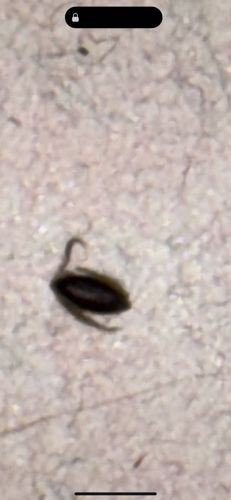Black Carpet Beetle Larva
Scientific Name: Attagenus unicolor
Order & Family: Coleoptera, Dermestidae
Size: Larvae are typically 4-5 mm in length. Adults are 3-5 mm.

Natural Habitat
Indoors, they are commonly found in dark, undisturbed areas such as closets, attics, under carpets, and in pantries. Outdoors, they can be found in bird nests, animal carcasses, and dried plant material.
Diet & Feeding
Larvae are scavengers and consumer a wide variety of organic materials, including wool, silk, feathers, leather, fur, pet hair, dead insects, museum specimens, dried food products (grains, cereals, spices), and even some synthetic fibers if soiled with food.
Behavior Patterns
Larvae are cryptic and avoid light, often burrowing deep into infested materials. They undergo several molts before pupating. The bristly, carrot-shaped larvae are the damaging stage. Adults are attracted to light and are often found near windows; they feed on pollen and nectar outdoors.
Risks & Benefits
Risks: Black carpet beetle larvae are significant household pests, causing damage to textiles, clothing, carpets, upholstered furniture, and stored food products. They can also trigger allergic reactions in sensitive individuals due to their shed skins and frass. Benefits: In nature, they play a role in decomposition, breaking down animal remains and other organic matter.
Identified on: 9/15/2025